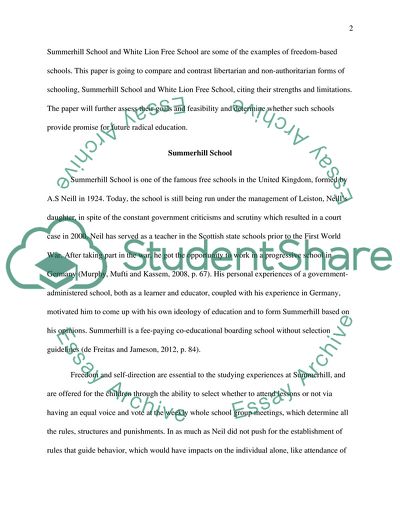Cite this document
(“Libertarian and Non-Authoritarian Schooling Systems Essay”, n.d.)
Libertarian and Non-Authoritarian Schooling Systems Essay. Retrieved from https://studentshare.org/education/1695128-compare-and-contrast-libertarian-non-authoritarian-forms-of-schooling-the-modern-school-movement-summerhill-school-white-lion-free-school-radical-educational-experiments-you-should-critically-examine-both-their-phiosophical-ideals-and-their-practica
Libertarian and Non-Authoritarian Schooling Systems Essay. Retrieved from https://studentshare.org/education/1695128-compare-and-contrast-libertarian-non-authoritarian-forms-of-schooling-the-modern-school-movement-summerhill-school-white-lion-free-school-radical-educational-experiments-you-should-critically-examine-both-their-phiosophical-ideals-and-their-practica
(Libertarian and Non-Authoritarian Schooling Systems Essay)
Libertarian and Non-Authoritarian Schooling Systems Essay. https://studentshare.org/education/1695128-compare-and-contrast-libertarian-non-authoritarian-forms-of-schooling-the-modern-school-movement-summerhill-school-white-lion-free-school-radical-educational-experiments-you-should-critically-examine-both-their-phiosophical-ideals-and-their-practica.
Libertarian and Non-Authoritarian Schooling Systems Essay. https://studentshare.org/education/1695128-compare-and-contrast-libertarian-non-authoritarian-forms-of-schooling-the-modern-school-movement-summerhill-school-white-lion-free-school-radical-educational-experiments-you-should-critically-examine-both-their-phiosophical-ideals-and-their-practica.
“Libertarian and Non-Authoritarian Schooling Systems Essay”, n.d. https://studentshare.org/education/1695128-compare-and-contrast-libertarian-non-authoritarian-forms-of-schooling-the-modern-school-movement-summerhill-school-white-lion-free-school-radical-educational-experiments-you-should-critically-examine-both-their-phiosophical-ideals-and-their-practica.


